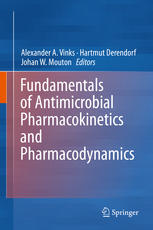

Most ebook files are in PDF format, so you can easily read them using various software such as Foxit Reader or directly on the Google Chrome browser.
Some ebook files are released by publishers in other formats such as .awz, .mobi, .epub, .fb2, etc. You may need to install specific software to read these formats on mobile/PC, such as Calibre.
Please read the tutorial at this link: https://ebookbell.com/faq
We offer FREE conversion to the popular formats you request; however, this may take some time. Therefore, right after payment, please email us, and we will try to provide the service as quickly as possible.
For some exceptional file formats or broken links (if any), please refrain from opening any disputes. Instead, email us first, and we will try to assist within a maximum of 6 hours.
EbookBell Team

4.0
66 reviewsOver the past decade, significant progress has been made in the theory and applications of pharmacodynamics of antimicrobial agents. On the basis of pharmacokinetic-pharmacodynamic modeling concepts it has become possible to describe and predict the time course of antimicrobial effects under normal and pathophysiological conditions. The study of pharmacokinetic-pharmacodynamic relationships can be of considerable value in understanding drug action, defining optimal dosing regimens, and in making predictions under new or changing pre-clinical and clinical circumstances. Not surprisingly, pharmacokinetic-pharmacodynamic modeling concepts are increasingly applied in both basic and clinical research as well as in drug development.
The book will be designed as a reference on the application of pharmacokinetic-pharmacodynamic principles for the optimization of antimicrobial therapy, namely pharmacotherapy, and infectious diseases. The reader will be introduced to various aspects of the fundamentals of antimicrobial pharmacodynamics, the integration of pharmacokinetics with pharmacodynamics for all major classes of antibiotics, and the translation of in vitro and animal model data to basic research and clinical situations in humans.